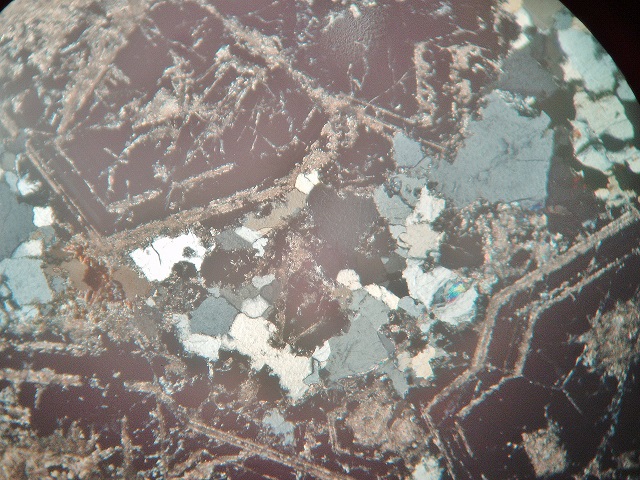|

Cross polarised light Although
belonging to the trigonal system, many of the harkerite sections
behave anomalously as a cubic mineral as seen here and thus appear to
be isotropic. Its ready alteration to carbonate is also evident. The
mineral with low birefringence interference colours (grey and white)
suggest quartz but its higher refractive index suggest it is
monticellite, a Ca/Mg silicate.
Back to thumbnails.
|
Map
showing locality of Allt na
Garbhlain, Camas Malag, Kilbride, Isle of Skye NG5853 1877

Created with Memory-Map. ©Crown Copyright. Licence number
100034184. www.memory-map.co.uk
Harkerite is a complex compound carbonate containing
boron and was first described in 1948 by Tilley after the petrologist
Alfred Harker of the Scottish Geological Survey. It was first
discovered during a survey of the zoned contact-skarns of the
Broadford area, Skye where the mineral is developed at one locality
only, that of Camas Malag about 4.5 miles SW of Broadford. The
mineral is a result of metasomatism between a tertiary granite and
the Cambrian Strath Suardal Limestone. |